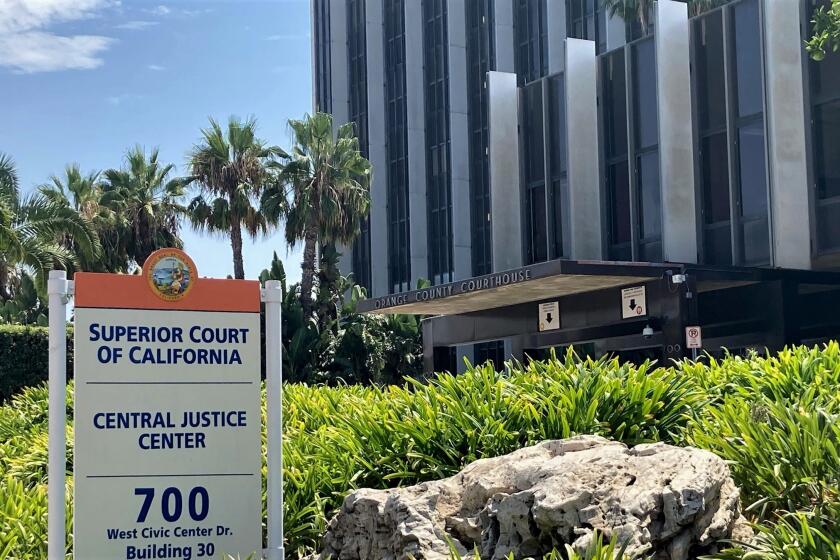Dunes talks continue into late evening
- Share via
Andrew Glazer
NEWPORT BEACH -- The Planning Commission spent hours discussing the
proposed Dunes hotel late Thursday night in an effort to finally reach a
decision on how the large-scale project will proceed.
At press time late Thursday, the commission had not taken a vote. Several
project opponents were still waiting to speak out while the commissioners
waded through technical information from an environmental report on the
project.
However, indications during the early part of the meeting appeared to
favor the development. Dunes management agreed to reduce one time-share
building from four to two stories -- and to be no higher than 32 feet.
The Dunes also agreed to limit the number of cars driven in and out of
the hotel by non-guests to 1,500 a day during the off-season, and 2,000 a
day from Thanksgiving to New Year’s Day.
Dunes spokesman Robert Gleason said the meeting seemed to be going well.
The commission detailed seven aspects of the project: view, noise, light
pollution, water pollution, air pollution, traffic and parking.
Commissioner Steven Kiser said the Dunes resort could be an asset to the
community.
“It will certainly change the landscape, but it might give people
something pleasant to look at,” Kiser said.
Critics of the Dunes -- which is intended to be a five-star resort --
have complained that it is too big, as high as the bluffs overlooking the
site, and too unfriendly to the environmentally sensitive Back Bay. The
debate has lasted for months.
In addition to its location and traffic concerns, one major objection
opponents have is the proposed conference space. The commission recently
requested the conference space be reduced from 54,000 to 30,000 square
feet.
Dunes management claims it needs the large space for the hotel to be
financially viable.
Newport Beach officials predict the resort would generate more than $1
million in tax revenues for the city.
Commissioner Michael Kranzley pointed out, however, that the overall
scope and square footage of the project is not too much larger than what
was originally approved in the early 1990s.
“We got the project down to a chip shot within what the settlement
agreement allowed,” Kranzley said.
All the latest on Orange County from Orange County.
Get our free TimesOC newsletter.
You may occasionally receive promotional content from the Daily Pilot.







